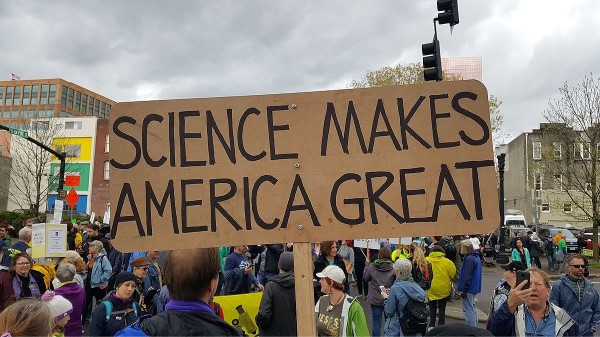Mr. Trump's science budget

What Mr. Trump’s record-setting $5 trillion budget includes, according to Jim Tankersley and Michael Tackett in the Times: a 5 % increase in military spending, more than the military asked for; $9 billion for a wall along the border with Mexico; and cuts of $2 trillion from “mandatory safety-net programs,” such as Medicare and Medicaid.
What Mr. Trump’s record-setting $5 trillion budget also includes, according to the news staff of Science Magazine:
a cut of $5 billion, or 13 %, in the NIH budget
a cut of 8 % in NASA’s science portfolio
a cut of $1 billion, or 12 %, in the NSF budget; a cut of $5.5 billion, or 17 % in DOE’s Office of Science, and virtual elimination of the Office of Energy Efficiency and Renewable Energy
a cut of nearly $3 billion to the Environmental Protection Agency and a cut of $440 million, or 40 %;
a cut of $300 million, or 30 %, in the NIST budget, including (perhaps surprisingly) elimination of the Manufacturing Extension Partnership
The science staff notes that the president’s science advisor, Kelvin Droegemeier, perhaps predictably,
calls the request “an important down payment on America’s future.” A statement from the White House Office of Science and Technology Policy (OSTP), which he leads, says the president’s budget “promotes responsible spending [by] prioritizing high-impact programs that have been shown to be effective.”
The OSTP statement cites artificial intelligence (AI), quantum information science, wireless 5G communications, and advanced manufacturing as administration priorities. It says the request would allocate $850 million for AI development and $430 million for quantum science across several agencies. But it’s impossible to tell whether that level of investment is higher or lower than current spending.
What is clear, however, is that those investments would be part of a diminished federal research enterprise. …
They conclude,
Overall, White House officials say their goal is to cut spending on domestic and foreign aid programs by about 5% below this year’s levels while increasing military spending. At the same time, the administration says it wants to generally abide by a 2011 law that calls for reducing nondefense spending by 9% and defense spending by 11% in 2020, compared with this year’s spending.
